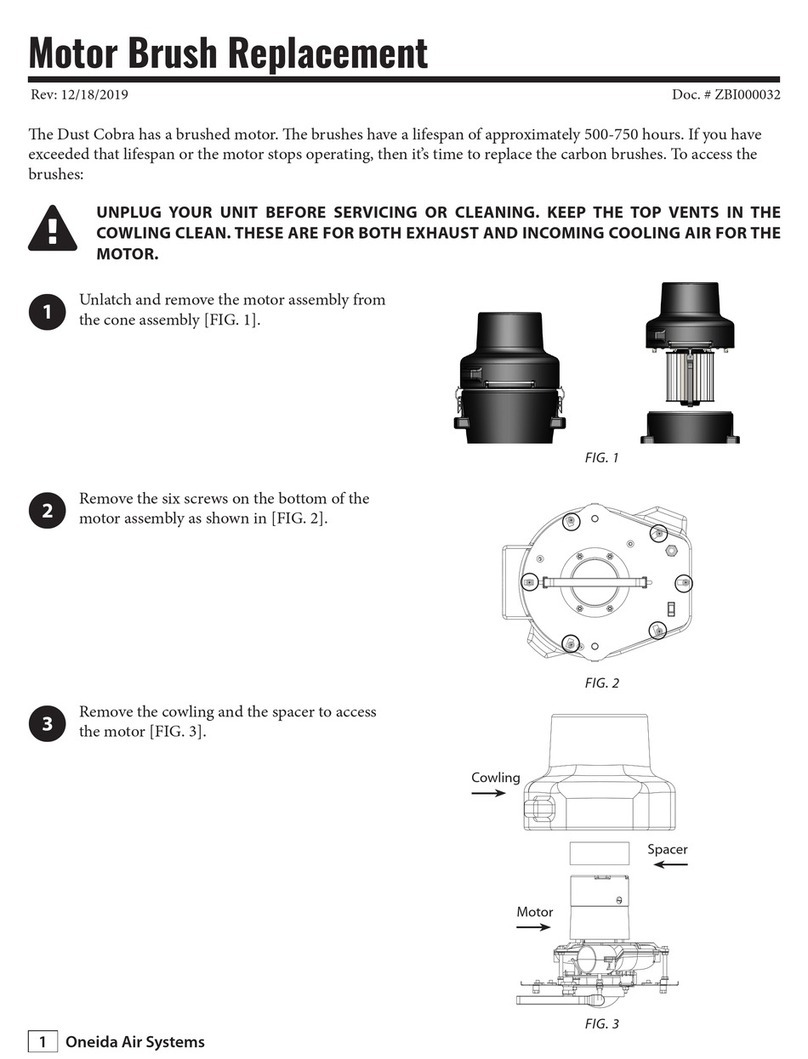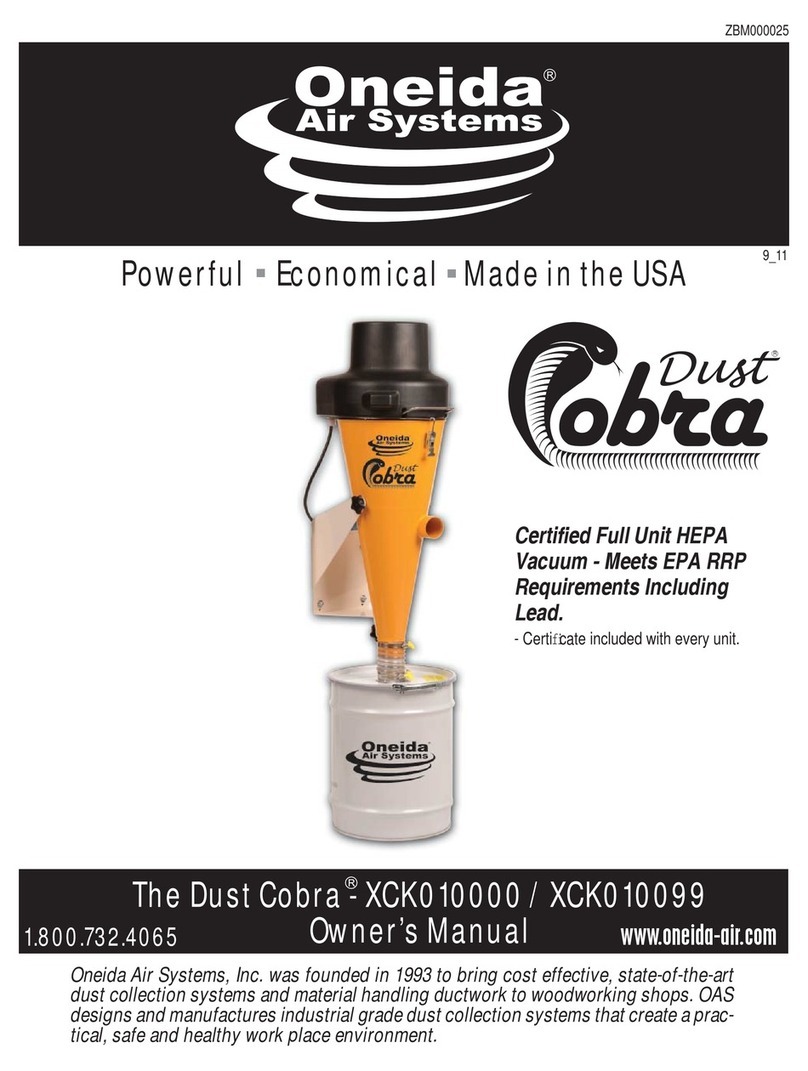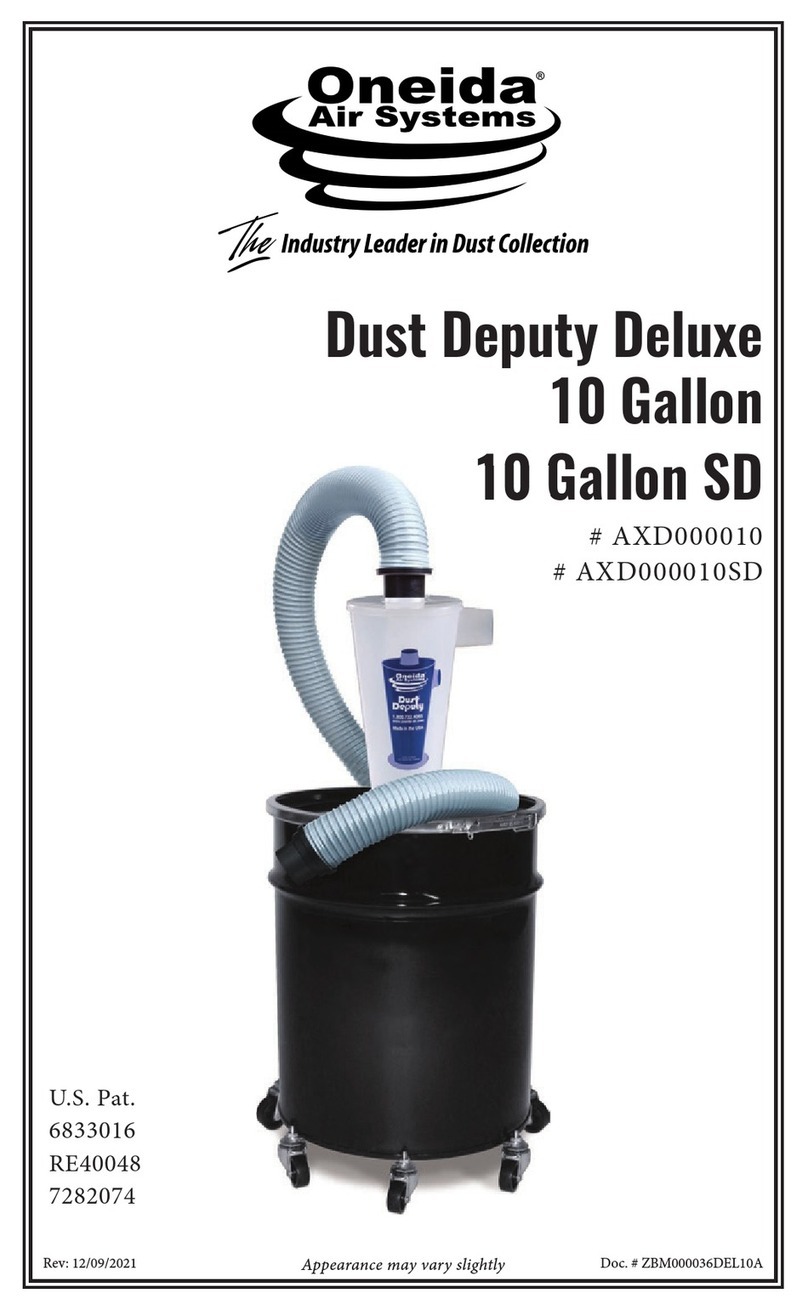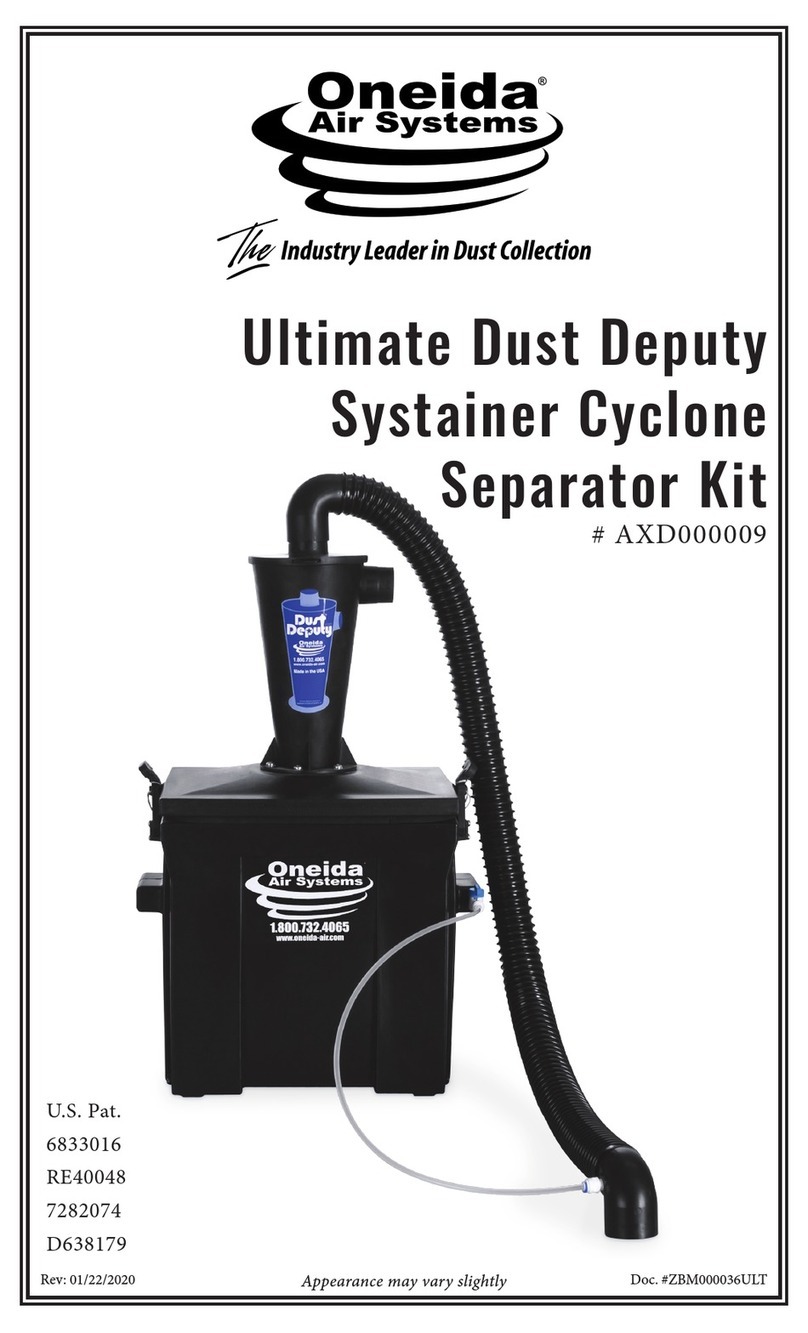
Oneida Air Systems, Inc.2
System Start-Up Information
1. Install ductwork/ex hose completely before operating collector.
a. Seal ductwork with silicone sealant or duct tape if leaks are found.
b. Have dust drum in place and sealed.
2. DO NOT operate without lter in place. Debris will cause damage to the motor!
3. THIS UNIT IS NOT RATED FOR USE IN COMBUSTIBLE ENVIRONMENTS.
4. is equipment incorporates parts such as switches, motors or the like that tend to produce arcs or sparks that can cause an explosion.
5. To reduce the risk of Electric Shock, DO NOT use outdoors or on wet surfaces.
6. Exhaust air should not be vented into a wall, a ceiling, or a concealed space of a building.
7. To reduce the risk of injury from moving parts - unplug BEFORE servicing.
8. Ensure that your dust collector is turned o and unplugged during installation.
9. Use this equipment for dry material collection only. DO NOT use for liquid collection.
WARNING
FIRE HAZARDS
1. Wood shaping and cutting processes generate wood chips, shavings and dust. ese materials are considered combustible. Air borne wood dust
below 420 microns in size (0.017 of an inch) in certain concentration ranges when ignited can deagrate (burn quickly). An ignition source
such as a spark or ember can ignite a dust mixture resulting in an expanding ame front, which can cause an explosion if tightly contained. A
disturbance that raises a cloud of accumulated ne dust can raise additional dust clouds, which can cause a series of explosions that can level an
entire building. Until this type of re has been witnessed, it is dicult to believe the devastation. is type of re is rare but worth safeguarding
against.
2. e best way to avoid a wood shop re is to keep the shop clean. A shop ankle deep in dust with layers of ne dust everywhere is an accident
waiting to happen. A good dust collection system reduces overall re hazards but also adds new concerns. A re hazard is still present.
Combustible material is now in the dust collector and storage container.
3. e following points are worth heeding:
a. It is the buyer’s responsibility to follow all applicable federal, state, local, OSHA, NFPA, or authorities having jurisdiction
codes and regulations when installing and operating this dust collector.
b. Fire Marshals may want the unit located outside of the building. If the collector is located inside the facility, controls
such as spark detection, suppression, or explosion venting may be required.
c. Most local jurisdictions consult or adopt NFPA (National Fire Protection Agency) codes. However, other codes may
apply. Local codes may vary from jurisdiction to jurisdiction.
d. NFPA664 Code book, “Standard for the Prevention of Fires and Explosions in Wood Processing and Woodworking
Facilities”, applies to woodworking operations that occupy areas of more than 5,000 sq. . or to areas where dust
producing equipment requires an aggregate dust collection ow rate of more than 1,500 cfm (cubic feet per minute).
is exempts some small operators from the NFPA code 664, but other codes may apply in your jurisdiction. Consult
your local Fire Marshal for help. Additional information can be found in NFPA Code Book 664.
MAKE SURE TO READ AND UNDERSTAND THE INSTALLATION AND MAINTENANCE INSTRUCTIONS AS
WELL AS ALL RECOMMENDED SAFETY PRACTICES.

































